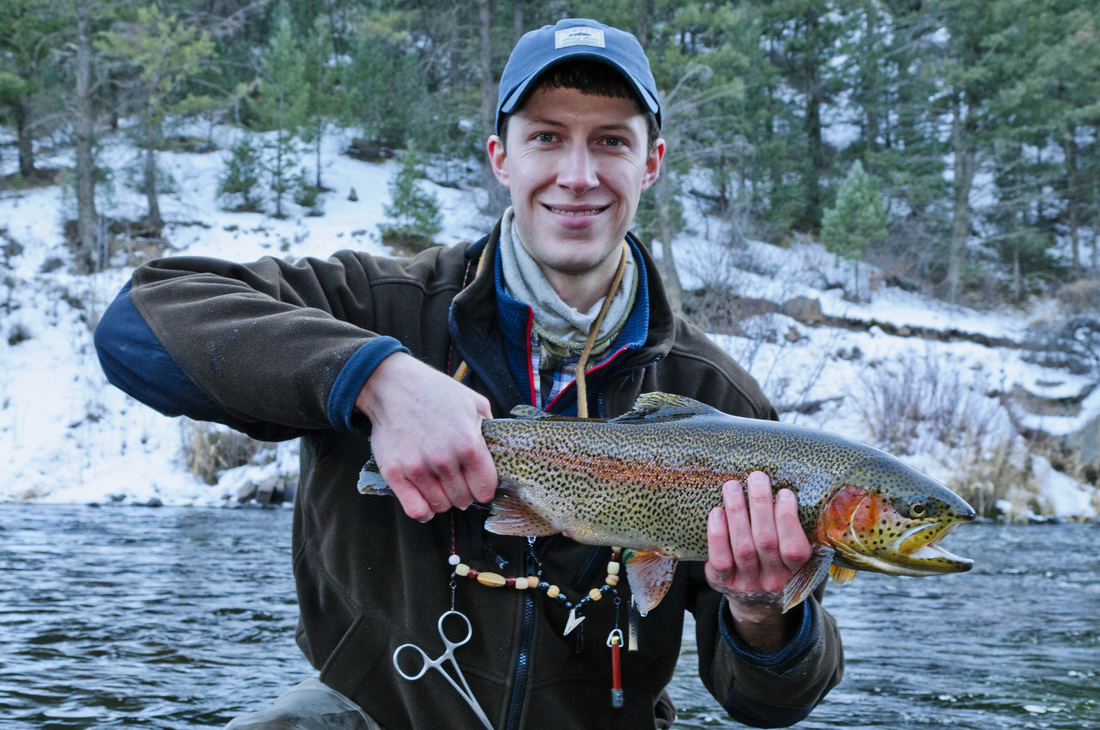Finding Winter Trout
Between November and March, trout overwinter in slower runs and deep pools. These locations provide trout with the largest quantity of food, while expending the least amount of energy. Savvy anglers learn quickly to avoid fast riffles, runs, and rapids as these areas have fewer fish.
Unlike the summer months, when fishing can be excellent atdawn ordusk, winter angling is best at midday. Cold water (high 30s and low 40s) has a profound effect on the aquatic life and the trout’s feeding behavior.Carry a digital thermometer and get into the habit of checking the water temperature regularly. If the water is below 40 degrees the odds are pretty good that the fish will be lethargic and unwilling to cooperate. You may need to go back to the truck and have a hot cup of coffee and wait for the sun to warm the water. It’s not uncommon to find anchor ice or floating slush before 10:00 A.M. If you’re fishing a tailwater, move closer to the dam (warmer water) and that should alleviate most of the ice.

During the winter months, trout stack up in the deeper runs and slower pools. Anglers willing to battle the elements can foolsome impressive trout,despite wintery conditions. Forrest Dorsey fooled thisbeautiful South Platte rainbow with an egg pattern in the dead of winter.
By late November, most of the hatches are done for the season, leaving only sporadic blue-winged olives and intermittent hatches of midges. A trout that would have filled its belly several times a day during the summer months, now consumes only a few morsels of food each day.
The best fishing is typically between 11 A.M. and 3 P.M. Under normal winter conditions, the water temperature will gradually rise a few degrees throughout the day. A 3- to 5-degree temperature increase can make a huge difference in the outcome of your day. On unseasonably warm days, the water may increase 5 to 10 degrees, causing the trout to go on a feeding binge.
Always be on the lookout for any evidence of a midge hatch. If you start to see a few adults buzzing around, you should begin to see a few trout moving from nonfeeding lies into feedinglies, taking advantage of emerging midge pupae. It is important to make the most of this feeding activity while you can—the window of opportunity may only last for an hour or so.
